No. 28: Museum Sketchbook Pages
If you have the time over the holidays, find a museum or an art gallery to sit in for a few hours and draw what you see. This is one way I became comfortable drawing hands and faces.
I taught myself how to draw faces and hands by going to museums and copying the portraits I saw on the walls and in the sculpture galleries. Studying the paintings made it easier to see and break down form and shape because another artist had already done the work of interpreting life and had transformed faces and bodies into lines and brushstrokes. I had to learn very quickly how to draw hands for one of my first illustration jobs (I was hired to draw hands doing many things in the kitchen for Magnus Nilsson’s, The Nordic Cookbook, and later The Nordic Baking Book), so I went to the sculpture galleries at the Met and practiced drawing the hands I saw on the Roman sculptures. Your subjects don’t move when you sketch the art you see. It is one of the best ways to learn and understand how something complex can be simplified, and how other artists before you used their materials and tools to create.
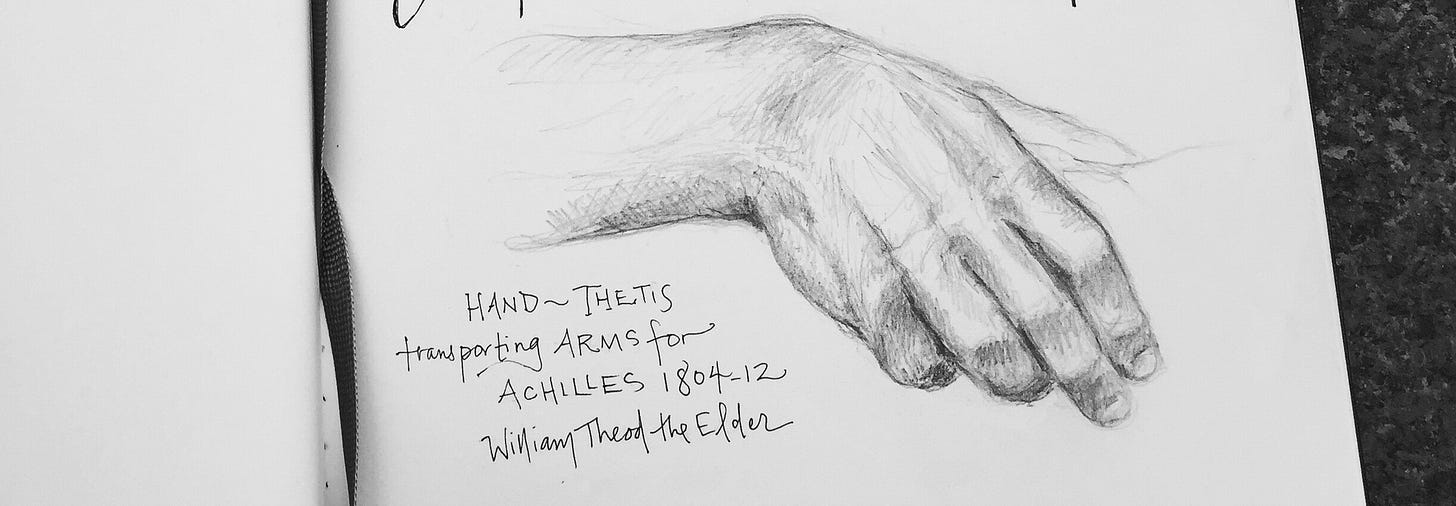
After a while I stopped just simply copying what I saw and began to work the interpretations of other people’s art into my very filled-up daily sketchbook pages. A day at a museum, captured on a page, is jammed with bits and pieces of the art I see, the people in the gallery spaces, the foods I eat, and shop items I encounter. Following are a few of my art gallery and museum adventures on sketchbook pages.
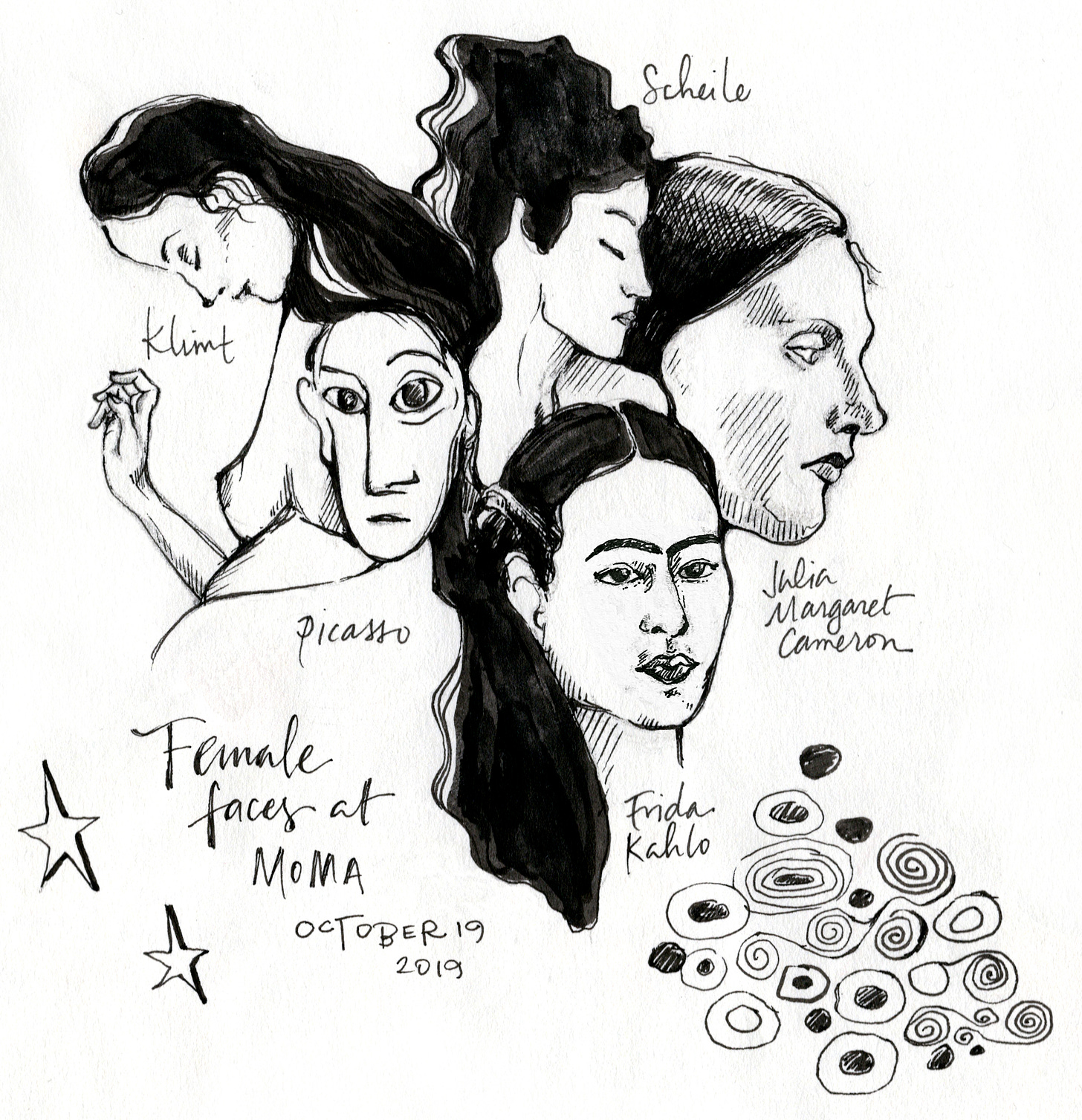
Eventually I grew to so love the ritual of my museum pages that I decided a single sketchbook page was not enough. I now fill a full spread, and sometimes even more, with all that I see and experience.
I recently talked to some paid subscribers about pulling these images together for a post, and the discussion led to how many people are too shy or too fearful of drawing in public. While I get the fear around people looking at and judging the work you do, it is safe to say that most people don’t care what you’re doing and are way more focused on themselves. Plus, if someone does stop to peek, the chances of their speaking to you are slim, and on the off chance that someone wants to have a closer look at what you are doing or to strike up a conversation, I assure you it will be a positive interaction, no matter what is on your pages. You can also politely pull your sketchbook toward you and say that it is private.
I remember my friend
telling me that he had these insecurities when he first started sketching people on location, and that even his moniker The Sneaky Artist came to be because he tried very hard to hide what he was doing. Now look at him with me, below, drawing confidently at the MoMA. Not one person stopped to look at what we were doing. We had to ask someone to take our photo. Maybe the more confident you get over time, the more you’ll get left alone? Or maybe it’s New York. It seems every other person is sketching in NYC!I always encouraged my kids to draw what they saw at museums. This way they felt connected to the work I was doing, and they weren’t bored. I would give them little challenges, like “draw one thing from this room” or “draw something from this piece with me.” The idea was to draw and sketch in the moment without thinking too much. To find shapes and simple things to draw, and to simply create together. It worked sometimes, but other times my suggestions were met with a lot of resistance. I brought them to museums enough times that now they seek out exhibitions on their own, and I like to think the drawing and looking over the years instilled in them an honest appreciation for looking at art.



I enjoy drawing at museums so much that the Met Store asked me to come in for a live demo back in 2017. I planned the page ahead of time as I wandered around the galleries, sketching lightly. Then, in front of a large group of people, I finished the page live, my work projected on a screen behind me. I had never drawn live before, as this was before Covid and Zoom. Now I am used to drawing and painting in front of people, though being spotlighted like I was on this day was a unique experience. I remember my knees shaking in the middle of the demo. As I painted, I described how I walk around and select things to draw—some small elements, some easier to render than others. Always a face or two. I sketch on location, from life, but I sometimes snap a photo so that I can reference it later on in case I want to come back to the drawings.


As I was pulling things together to write this post I saw this fascinating reel on The Met Museum’s Instagram that shares the process of re-creating the tutu on Degas’ dancer. It reminded me of two other museum pages that feature some of my drawings of the same dancer.
This holiday season, if you have some time to see art at a local museum or during your travels, bring your sketchbook along. Maybe this could be the start of a new drawing ritual for you. If you do explore the idea, please share what you create with me!
I have new pages from recent museum visits, but I am saving them for the book I am working on now, Draw Your Adventures. I share some peeks to the drawings I am working on for the book on my Instagram stories.
My friends
and are hosting another of their popular Zoom classes on January 13th. This class coincidentally has a similar topic to this post - they are re-interpreting masterworks. Click here to learn more and to register.Thanks to those of you who joined my previous free class with Derwent. We worked on simple two-point perspective by sketching and then painting a stack of holiday gifts. Here is a link to the replay on YouTube.
Ambassador and Affiliate Codes
If you’d like to try out Blackwing pencils or just order some new items, please shop using this unique link: blackwing602.com/sdionbaker. When you purchase using my link, there’s no additional cost to you and I earn a small commission. I appreciate your support!
A new affiliate of mine is Soumkine in Paris. Their stationery, journals, and sketchbooks are so beautiful. Click here to shop.
All Canvas lights and accessories are 10% off with my discount code: SDB10.


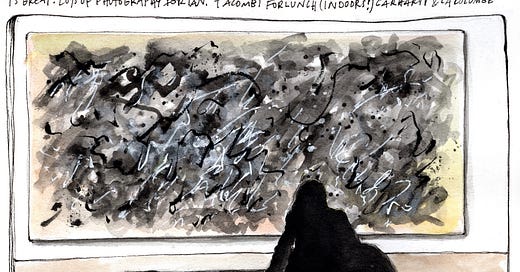


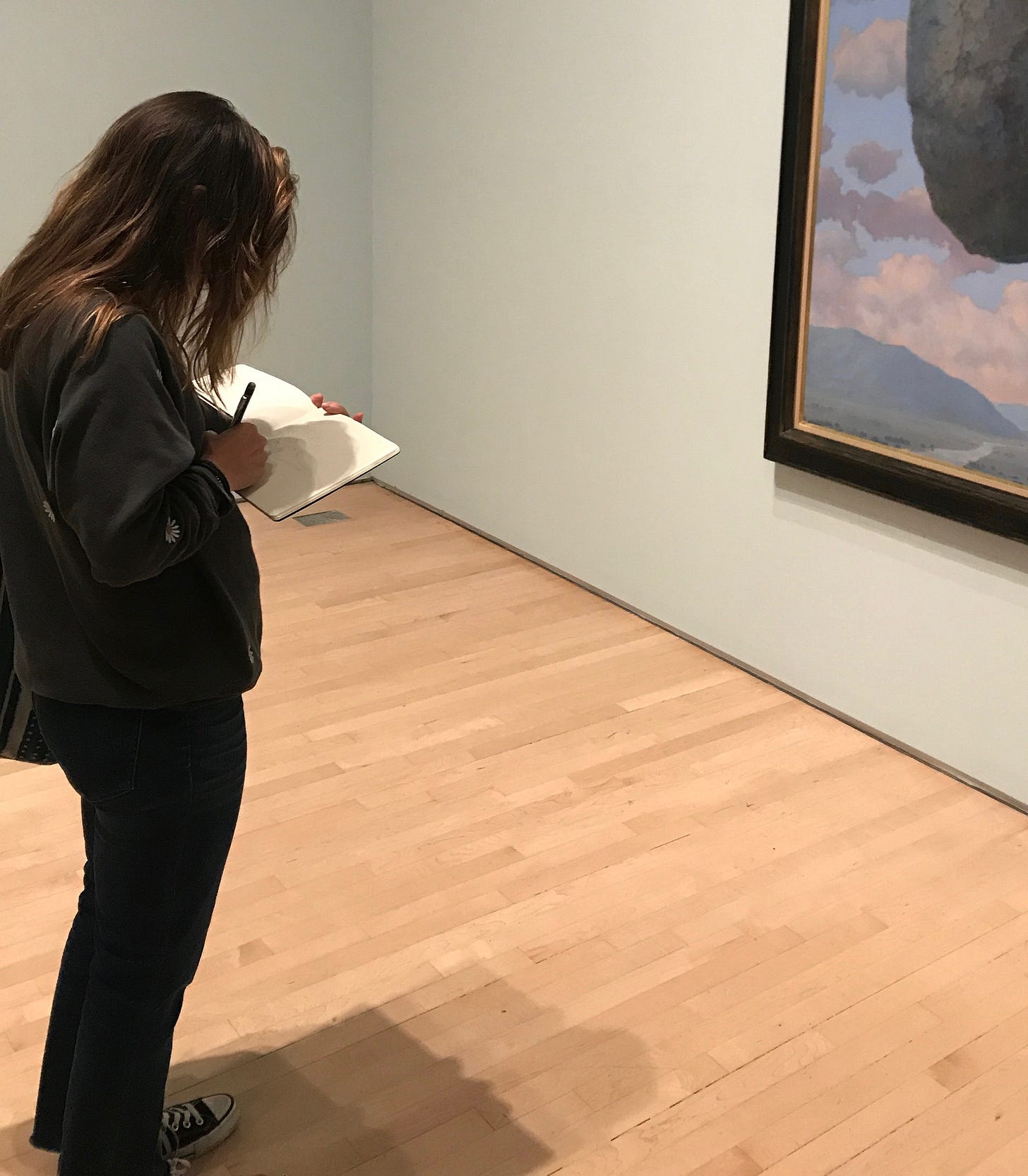
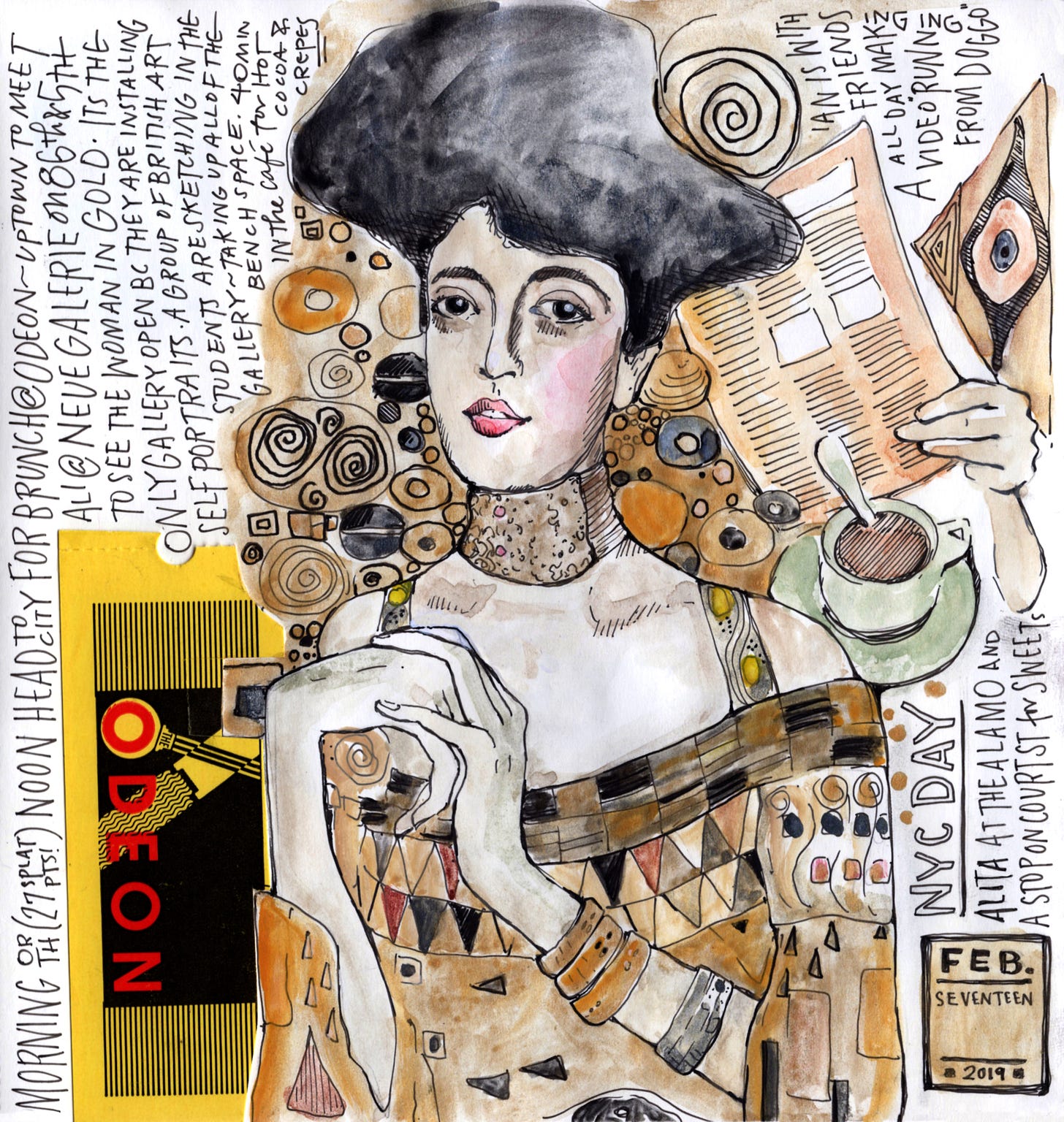
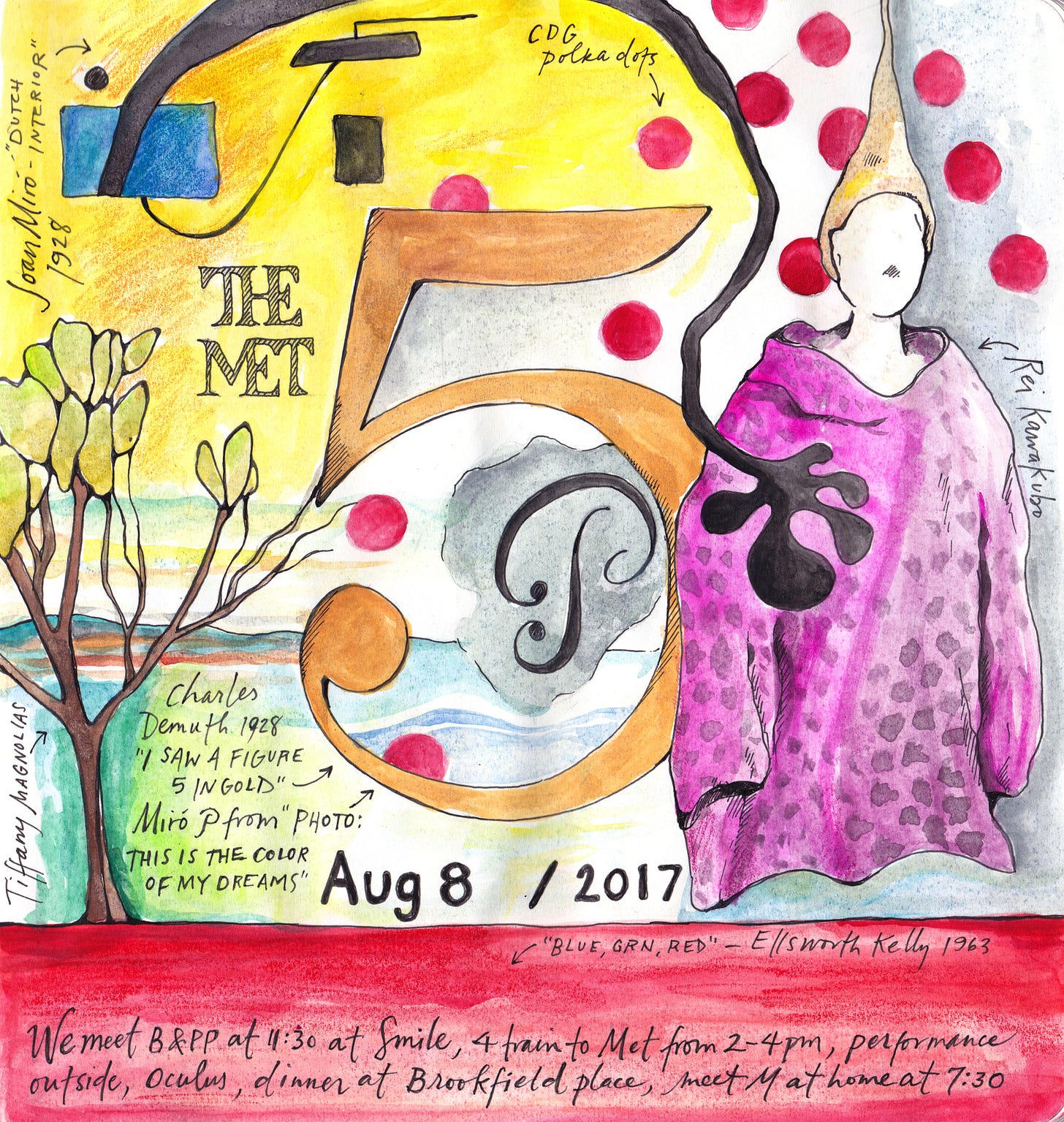





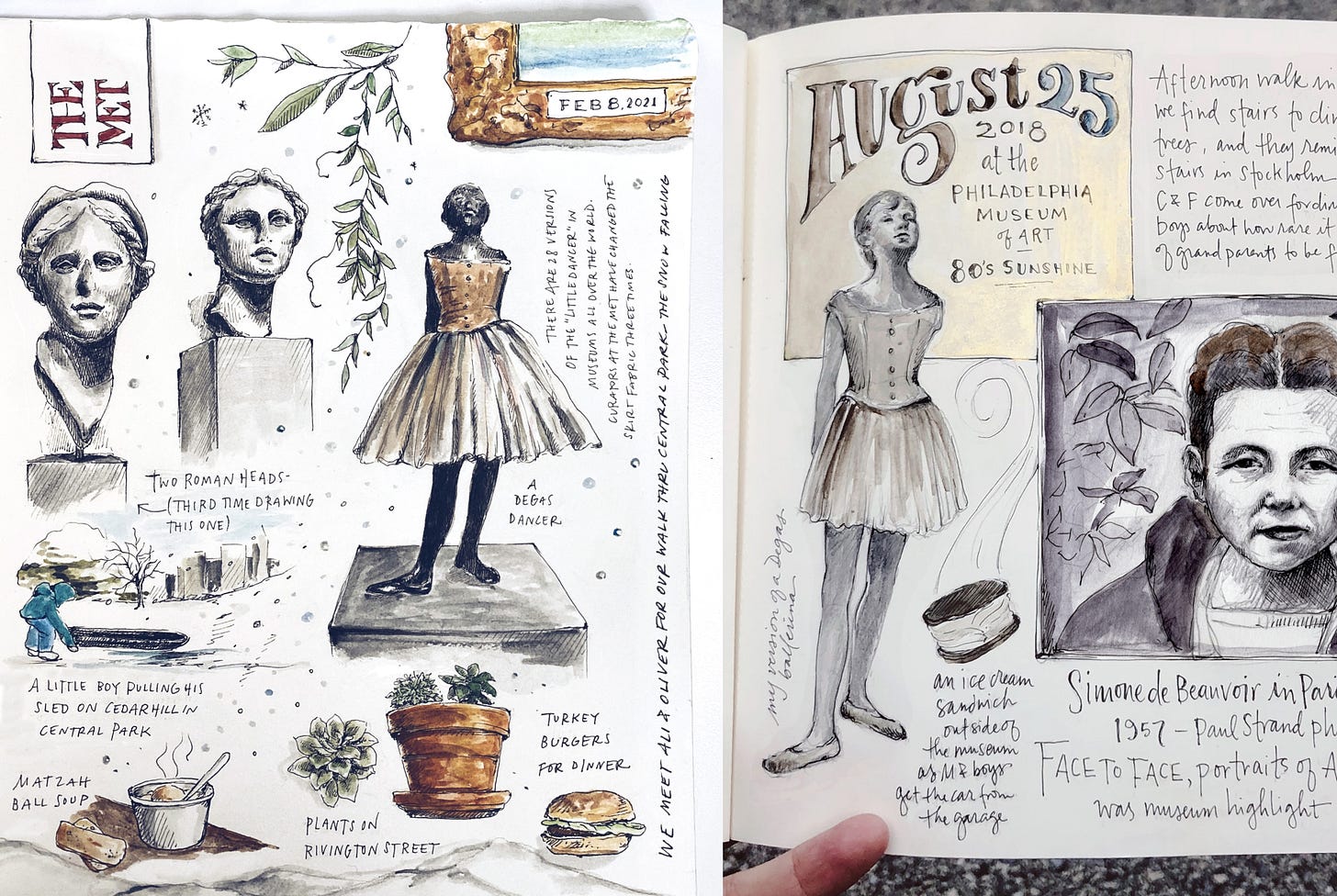
I love this, I don't do as much as I should at Museums but I'm going to start! Thanks for mentioning our class.
This inspires me, Sam!